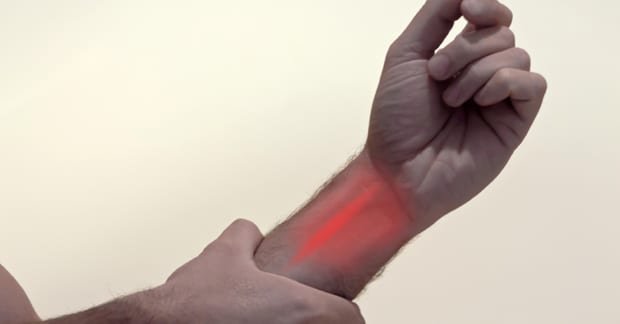
How Alcohol Influences First Impressions By Wendy Patrick J.D Ph.d
How Alcohol Influences First Impressions Indulgence impacts personality perception. Posted July 2, 2025 | Reviewed by Abigail Fagan THE BASICS What Is Alcoholism?

Carpal Tunnel Syndrome (CTS) is a common complaint presented to chiropractic offices. Usually, patients wait for weeks, months, or even years before seeking care, thus making management more challenging. The history of the “classic” CTS patient includes a mild, sporadic onset of symptoms that gradually becomes more frequent and intense.
This usually leads to continued problems that start to affect other areas proximal to the hand, such as the elbow, shoulder, and/or neck. We usually find that people will compensate during their activities, and instead of moving the wrist and hand to perform a task, they will start to move their elbow and shoulder more to avoid irritating movements of the hand/wrist.
Over time, overloading the muscles in these areas can lead to one or more conditions commonly referred to as “cumulative trauma disorder” (CTD), which includes many diagnoses including (but not limited to) tendonitis of the thumb (de Quervain’s Disease), ganglion cysts, tennis elbow (lateral epicondylitis), golfer’s or bowler’s elbow (medial epicondylitis), cubital tunnel syndrome (ulnar nerve pinch at the medial elbow), tunnel of Guyon syndrome (ulnar nerve pinch at the wrist), shoulder tendonitis (biceps, rotator cuff), thoracic outlet syndrome (a pinched nerve at the shoulder), and/or neck strain, neck herniated disk, pinched nerve, and/or headaches.
Many times, these conditions co-exist if the patient has really abused themselves (such as music majors who may practice playing their instrument for 4-5 hours a day) to a point where they are REALLY injured in multiple areas.
Limiting this discussion to pinched nerves in the neck and upper limb, the question often arises, “…how do you know where the nerve is pinched?” The answer centers around determining an accurate history to find out EXACTLY where the patient feels numbness, tingling, weakness, and/or pain as each nerve innervates a different area.
For example, if a patient says, “…I feel numbness in my 4th and 5th finger,” this tells us that the ulnar nerve is pinched (as opposed to numbness in the 2nd, 3rd, or 4th fingers which suggests median nerve pinch—more classic of CTS). If the patient says the numbness affects the arm from the elbow down to the 4th and 5th finger, this suggests cubital tunnel syndrome (ulnar nerve pinch at the medial elbow).
If the numbness affects the person from the shoulder to the 4th and 5th finger, thoracic outlet syndrome becomes a probable diagnosis. And lastly, if the neck, shoulder, arm, and hand on the pinky side are numb, we are suspicious of a pinched nerve in the neck.
Then, we confirm our suspicions with a more detailed physical examination. Here, we test for compression of a nerve at the neck by positioning the head in a backward, rotated position and holding it for about 10 seconds to see if the numbness is reproduced. We can also manually (with our hands/fingers) compress the various nerve pathways to see if numbness occurs at the front of the neck, the shoulder under the collar bone, at the elbow and wrist counting the seconds to time the onset of numbness and mapping the numbness location.
Placing the shoulder, elbow, and wrist in different positions can pinch the nerve as well, and mapping the location of the numbness tells us where and to what degree the nerve is pinched. We will also perform a neurological exam testing reflexes and strength, as well as sensory function using a sharp object. A special test called an EMG/NCV (electromyography and nerve conduction velocity) can be obtained to further verify the location and degree of nerve pinching and damage.
The advantage of chiropractic management is that chiropractors will treat EVERY LOCATION that may be contributing to the CTS symptoms, whether the pinch is in the neck, shoulder, elbow, and/or wrist. Managing the WHOLE PERSON, not just the wrist or CTS, is KEY to a successful outcome.
Dr. Matthew Dunn
Visit: https://winisbooks.com/
The articles on Fitnesshacksforlife.org website is provided for reference purposes only, A public resource you can use for free. You should not take them as the sole source of medical direction. Fitnesshacksforlife.org does not accept payments or incentives from any of the individuals or organizations named in the articles, and the articles are not an endorsement of those parties or their products or practices. Do not ever disregard professional psychological or medical advice nor delay in any manner seeking professional advice or treatment because of something you have read on our site or social media. Fitness Hacks For Life is a registered 501(c)(3) non-profit organization, eligible to receive donations under the laws of the United States of America.

How Alcohol Influences First Impressions Indulgence impacts personality perception. Posted July 2, 2025 | Reviewed by Abigail Fagan THE BASICS What Is Alcoholism?

Discovering the roots of Social Wellness Month unveils a profound journey towards recognizing the significance of social connections and forging

Many icks, on reflection, are just harmless “nicks.” THE BASICS Why Relationships Matter Take our Relationship Satisfaction Test Find a
If you feel suicidal, call or text the helpline: 988
Copyright © 2025 Fitnesshacksforlife.org | All rights Reserved | 501(c)(3)
400 NW Gilman Blvd.#787 Issaquah, WA 98027

Agreed Declined